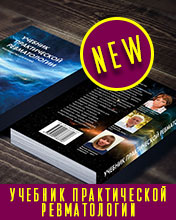Просмотров: 3 122
“AUTOLADY” as a new risk factor of osteoporosis
Polyakova Yu.V., Sevardova L.E., Akhnerdyan U.R., Nenasheva N.V., Zavodovsky B.V.
“Autolady” as an important factor of BMD decrease.
FGBNU “NII K&AR”, Volgograd, the Russian Federation.
Osteoporosis (OP) is driving the Earth, spreading all over the world. Approximately 50 percent of cases are symptom-free, and the sick don’t suspect of the disease until the bone fracture takes place. In 1990 all over the world there were registered 1,7 million cases of cervical hip fracture. And near the 2050 6,3 million cases are expected a year (increase by 3,7 times). However, only every third patient with the fracture addresses the doctor.
Mass medical OP examinations are too expensive even for “prosperous” countries, so in this case the target strategy is used to select people who are liable to health, survey and treatment. This strategy is based on risk factors. Nowadays 20 such factors are known.
The scientists of “Science research Institute of Clinical and Experimental Remathology” from Volgograd city (Russia) carried out the investigation of decrease of Autoladies’ bone mineral density (BMD). The average age of women in the group before 60 was 49 years old. The women with associated diseases which could influence BMD were excluded from the investigation after the corrected diagnosis.
The monitoring group included the women who addressed for medical care by themselves for preventive reasons. Usually most of these addressings coincides with the sleet season, the first week of TV programs on OP problems or female health.
The mode of life of these women included the usage of the car in everyday-life as a means of transportation. 50 percent of them live in high-storied buildings and use the lift. Averagely they spent 13 minutes a day out of doors.
During the examination all the women had BMD according to TtZ criteria. BMD was pointed out in the total hip (93 percent) over lumbar spine (67 percent). Mostly vertebras L1-L4 were injured.
Thus, the “Autolady” status can be treated as an important risk factor of OP development as a result of the possibility of the hip fracture at a young age.
Moderate physical activity, everyday walking, swimming, physical exercises, active mode of life in accordance with adequate insolation and sufficient getting food with calcium ensures keeping the perfect state of the bone graft for a long time.


